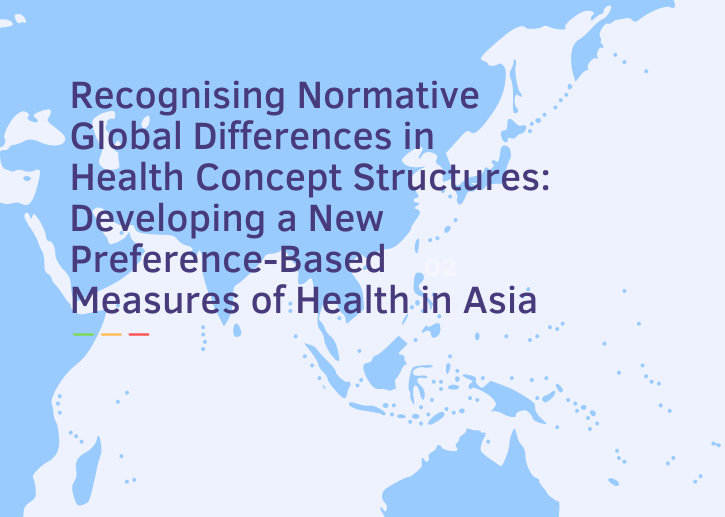The Cost Effectiveness Analysis (CEA) Studies and the New Addition to GEAR Mindmap
The Cost-Effectiveness
Analysis (CEA) studies compare the health outcomes and costs associated with
competing health care programs. Such studies are used to identify the intervention with the best
value for money for better resources allocation and to support priority setting.
However, CEA studies pose many methodological issues, including their
use and interpretation for policymakers. To help
researchers address this issue, Guide to Economic Analysis and Research online
resource (GEAR) has recently added a new central topic to the mindmap feature. (http://www.gear4health.com/gear/mind-map/11). On
the right-hand side, the mindmap provides users
with two immediate solutions as sub-branches i.e. comparing
the CEA results with Incremental Cost Effectiveness Ratio (ICER) from
evaluations of other treatments; and using a cost
effectiveness threshold. And the left hand
side of the mindmap presents the unanswered research questions regarding the
interpretation of cost effectiveness analysis results. Now, let’s explore the solutions and unanswered research questions as
represented in the mindmap.
CEA studies
express costs in currencies and health benefits in units of health such as
lives saved, cases averted and Quality Adjusted Life Years (QALY) gained. Now,
when comparing interventions in CEA studies, the important question for
resource allocation is how much additional benefit is achieved for the
additional cost incurred[1]. It
is therefore important to calculate incremental cost effectiveness of one
intervention over another, often expressed as ICER, presented in a cost
effectiveness plane. So in terms of interpreting CEA results for decision-making,
it is best for policymakers to first compare their study results with ICERS
from other treatments to allocate health care resources efficiently. Other
than this, most Health Technology Assessment (HTA)
organizations use cost effectiveness threshold to compare of interventions of
competing interventions. However, there are many countries with HTA limited sectors, which
do not yet have threshold values. Therefore,
GEAR mindmap has enlisted three approaches in identifying the opportunity cost
of an intervention to compare the CEA results of competing healthcare
interventions i.e. using common outcome indicators that address level of the problem;
comparing the results of the benchmark interventions; and using a league table
approach that lists cost effectiveness ratios for different interventions and
facilitates comparisons across interventions. In
the mindmap. the researchers can learn more about these approaches in the
detailed description box after clicking on each solution.
Apart from the above solution, the other
solution for policy makers to interpret whether the ICER of a healthcare
technology will be acceptable or not is using cost effectiveness threshold. It is the amount of money we are wiling to
spend to gain a one-year of life. It presents the opportunity costs of investing
in 1 QALY or Disability-Adjusted Life Year (DALY). However the
choice of cost effectiveness threshold is a value judgement that depends on
several factors like perspectives; how the policymakers values health outcomes
and money; and resources available. There are ongoing controversies
on what these values should be and varies between societies. For this, GEAR mindmap has proposed two
approaches: using supply side derived threshold
and demand side derived threshold, also known as “willingness to pay threshold”. A common example of demand side derived
threshold would be threshold based on per capita GDP. Supply side derived thresholds mainly take
into account the budget constraint scenario i.e when there are limits in the overall healthcare
budget available or when there are constraints on health systems’ abilities to increase expenditure. Both these approaches has its pros and cons
laid out in more detail in the description box below the mindmap.
This unanswered research question
is laid out in the left hand side of the mindmap. The sub-branches from
this research questions reveals some more focused areas/questions where knowledge is scarce and future
researches on cost effectiveness results interpretation could be explored. Specific research questions laid out in the
mindmap are how should we identify/estimate threshold for HTA in low
and middle income countries; estimating a supply side and demand side cost
effectiveness threshold for a certain country; and how do supply side and
demand side cost effectiveness threshold vary in low and middle income settings. These unanswered research questions in the
mindmap are designed to shape methodological judgments in the long run for
researchers interested in their area of interest.
The collective features in GEAR make it a very user-friendly and unique priority-setting global public good. It has high potential to make a difference to
researchers, health economic practitioners, ministry of health employees or
whoever trying to design, conduct, or analyze economic evaluation studies in a
resource-limited setting, especially low
and middle income countries. Register, explore, and try it out for
yourself.
Visit the website at www.gear4health.com to learn more!
`


